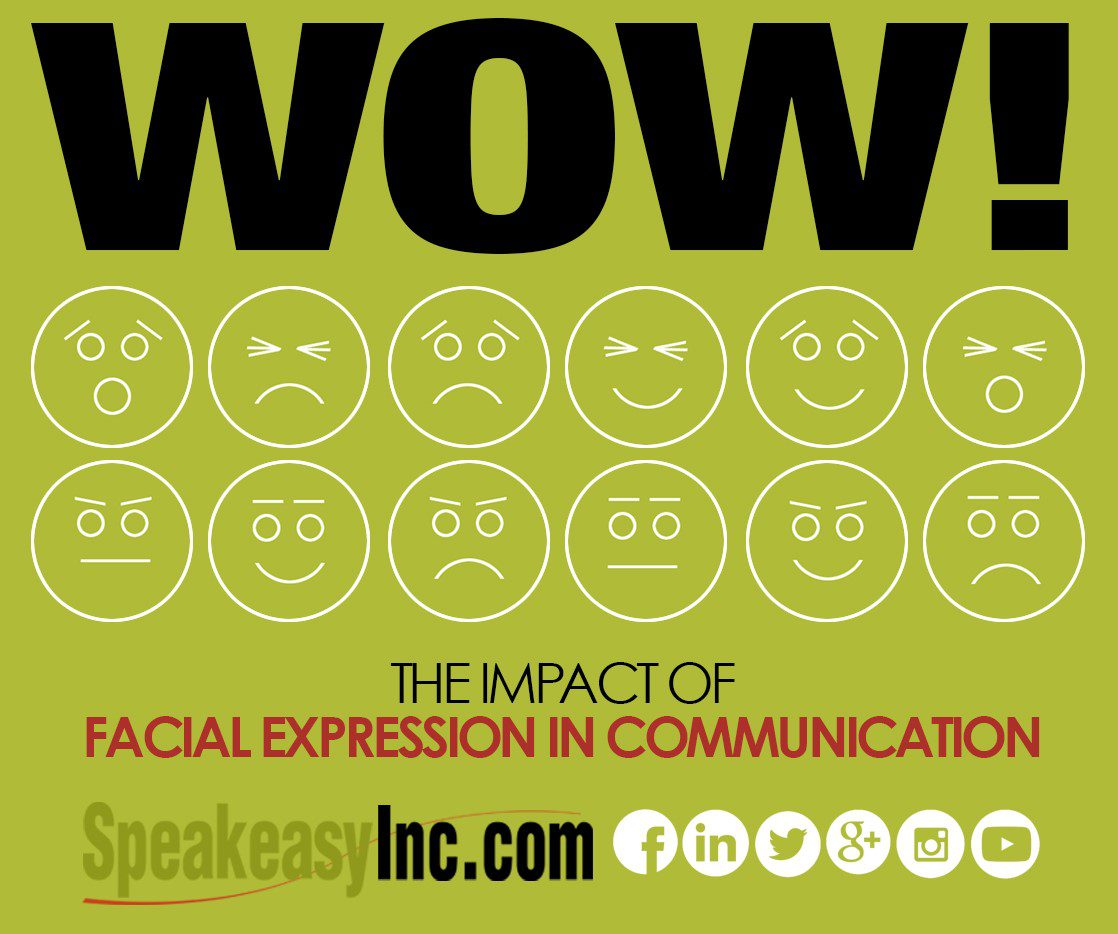
25 Aug The Science of Facial Expressions
Reading Time: 2 minutesFacial expressions and non-verbal behaviors are among the most critical and easily perceived aspects of our communication. The topic has such depth that our Speakeasy faculty could lead a multi-day seminar on the subject alone. Before we share our learning’s on how emotions affect the communication intent and your listeners’ processing, it would be wise to first know that most psychologists agree there are universal emotions demonstrated throughout all cultures, regions and ages. Most notably, Dr. Paul Ekman identified seven universal expressions and catalogued what it took to deliver them.
For the curious minds, in 1967 and 1968, Ekman traveled to Papua New Guinea to study the nonverbal behavior of the Fore people. He chose these people as they were an isolated, Stone Age culture insulated from the present day cultural norms. The culmination of the study presented these original universal emotions:
- Joy (also ‘Happiness’) – symbolized by raising of the mouth corners (an obvious smile) and tightening of the eyelids
- Surprise – symbolized by eyebrows arching, eyes opening wide and exposing more white, with the jaw dropping slightly
- Sadness – symbolized by lowering of the mouth corners, the eyebrows descending to the inner corners and the eyelids drooping
- Anger – symbolized by eyebrows lowering, lips pressing firmly and eyes bulging
- Disgust – symbolized by the upper lip raising, nose bridge wrinkling and cheeks raising
- Fear – symbolized by the upper eyelids raising, eyes opening and the lips stretching horizontally
- Contempt – symbolized by half of the upper lip tightening up and often the head is tilted slightly back
With this awareness of how others gauge and interpret emotions, it’s even more critical that you are mindful of your own facial expressions as you communicate. It is quite easy to let your face betray or sabotage your verbal message, particularly if they are not in agreement. Most people will prioritize your face and body language over your words, so managing both aspects of your communication is a must. Stay tuned for Part Two on ways to maintain command over your demonstrated emotions and to practice showing a greater range of positive and negative facial expressions.

